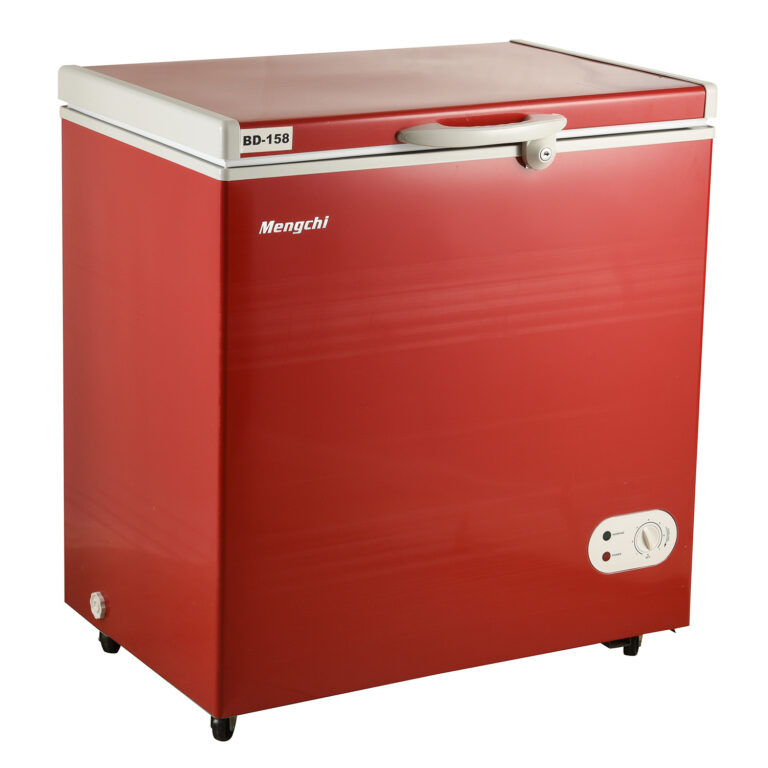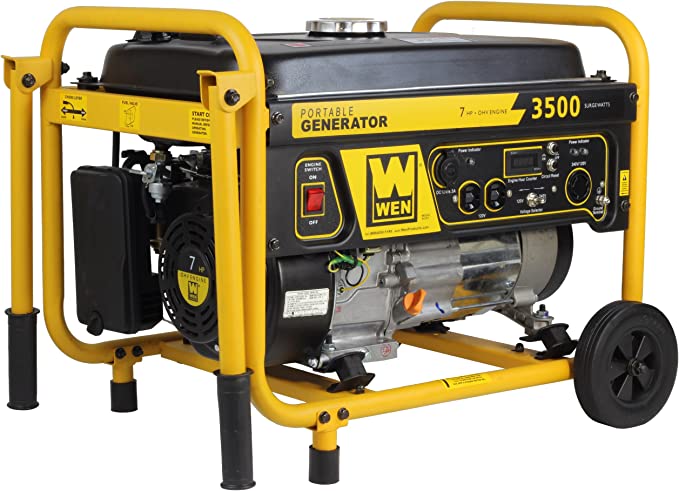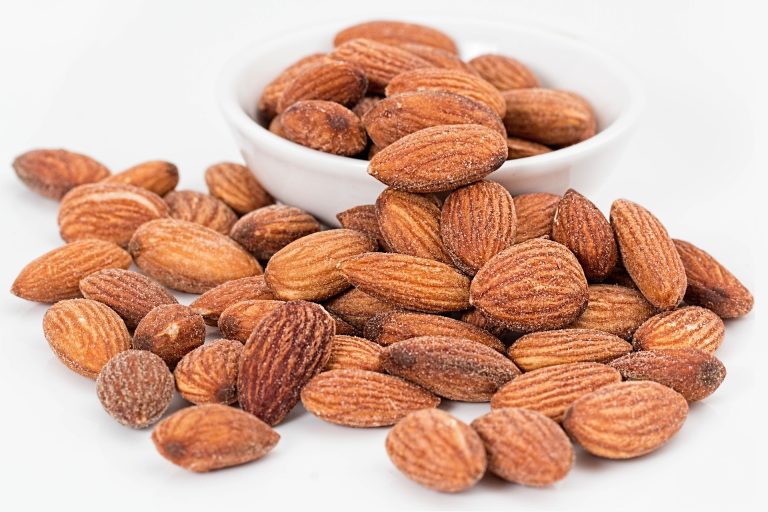Do All Freezers Have a Defrost Cycle?
Anyone who has owned a freezer for any length of time knows that it needs to be defrosted every so often. But have you ever stopped to wonder why?
Do all freezers have a defrost cycle or is it just a feature on some models?
Most freezers have a defrost cycle and require periodic defrosting.
The frequency of the defrost cycles depends on the type and brand of the freezer but is typically once every six months to a year.
Freezers that have a self-defrost feature also require periodic defrosting but can typically do so automatically without requiring the homeowner’s intervention.
This post will look at the defrost cycle and find out why it’s essential. Stay tuned!
Table of Contents
How the Frost Occurs in Freezers?
Frost in freezers is a very thin layer of ice that forms on the freezer walls, shelves, and food. Ice is formed when water vapor in the air condenses and freezes.
The amount of frost that forms depends on several factors, including the type of freezer, the temperature inside the freezer, and the humidity level.
Most frost-free freezers have a heating element that periodically melts any frost formed. However, this can cause some foods to defrost and refreeze, affecting their quality.
Manual defrost freezers don’t have this heating element, so they require more frequent defrosting to prevent too much frost from building up.
Regardless of the type of freezer, it’s essential to keep the door closed as much as possible to prevent warm, moist air from entering and causing frost to form.

What is the Purpose of Defrost Systems?
Freezers work by circulating cold air throughout the interior space. This cold air is created by a refrigerant, circulated through a system of coils.
The coils are located inside the freezer unit, and they transfer heat from the interior to the exterior. As the refrigerant circulates, it absorbs heat from the interior and transfers it to the exterior, where it is dissipated.
In order for this process to work effectively, the coils must be free of frost and ice. Otherwise, the coils will not be able to transfer heat properly.
Defrost systems are designed to remove frost and ice from the coils regularly.
Defrost systems can be used in conjunction with other freezer features, such as air vents and fan speeds, to improve the freezer’s efficiency further.
Do All Freezers Have a Defrost Cycle, and do All Need One?
All freezers have a defrost cycle, but not all need one. Chest freezers don’t usually require a defrost cycle because the cold air doesn’t circulate as much as in an upright freezer.
If you have an upright freezer, you should defrost it when there is 1/4 inch of ice buildup on the evaporator coils.
Defrosting your freezer keeps it running more efficiently and prevents freezer burn. Unplug it and prop the door open with a woodblock to defrost your freezer.
Once the ice has melted, clean the interior with a solution of 1 tablespoon bleach to 1 gallon of water. Then, dry the interior thoroughly and reposition the food. Close the door and plug the freezer back in.

Types of Defrost Systems
There are many types of defrost systems available. You can pick any of these depending on your preferences. But to select the right one, it is vital to know about all of them.
Here are the most standard types of defrost systems.
Automatic Defrost
Automatic Defrost systems are a common feature in modern refrigerators. Rather than manually defrosting the fridge regularly, these systems use sensors to monitor the build-up of frost and ice.
When the sensors detect a certain frost level, the system automatically kicks into action, defrosting the fridge and preventing ice from building up.
This can help to improve the efficiency of the fridge, as well as prolong its lifespan. Automatic Defrost systems can also help prevent food spoilage by keeping food at a consistent temperature.
In addition, they can help to reduce energy consumption, as the fridge will not have to work as hard to maintain a cool temperature.
Overall, Automatic Defrost systems offer several benefits and are a worthwhile investment for any fridge owner.
Adaptive Defrost
In a refrigerator with an adaptive defrost system, the evaporator coils are heated periodically to melt away any frost that has built up.
This helps to improve the fridge’s efficiency by preventing the formation of ice crystals, which can block airflow and make the fridge work harder to maintain the desired temperature.
The main benefit of an adaptive defrost system is that it can help extend the life of your fridge by preventing damage to the coils.
In addition, it can also help to improve the performance of your fridge by ensuring that it maintains a consistent temperature.
Manual Defrost
A manual defrost system is the most common type of refrigerator freezer. Food freezes faster in a manual defrost freezer, requiring more maintenance.
The evaporator coils must be checked and cleaned regularly to prevent ice buildup. In addition, the door gaskets and seals should be inspected periodically to ensure that they are sealing properly.
A manual defrost system is less energy-efficient than an automatic defrost system, but it is typically more affordable.
As a result, many consumers choose a manual defrost system for their household refrigerators.
How to Keep Freezer Defrost Systems Running Appropriately
If you have a defrost system in your fridge, you should know a few things to keep it running smoothly.
First, it is essential to clean the sensors regularly if it’s an automatic defrost system. This can be done with a soft cloth or brush and will help remove any dust or dirt build-up.
In addition, it is essential to check the seals on the fridge door and make sure that they are intact. If the seals are not tight, cold air can escape, causing the fridge to work harder and use more energy.
Finally, it is a good idea to keep an eye on the frost level in the fridge. If it starts to build up, you can manually defrost the fridge by turning off the power and letting it sit for a few hours.
By following these simple tips, you can help to keep your defrost system running smoothly and prevent any problems from occurring.
How to Defrost Your Freezer
If you are using a manual freezer defrost system, you will have to manually initiate and complete the defrost cycle. Follow the steps below to do the defrost cycle.
Step 1. Cut Out the Power
The first step in defrosting your freezer is turning it off and unloading the contents. This will help prevent the food from thawing and refreezing, which can damage the quality of the food.
Once the freezer is empty, open the door to allow the warm air to circulate.
Step 2. Think About the Water
The next step is to figure out what to do about the water resulting from the ice melt. You can use a sponge or soft cloth to soak and get rid of the water.
Step 3. Let the Ice Melt
The next step is to let the ice melt. If there’s only a small amount of frost, let the ice melt naturally. But if there’s a considerable chunk, help quicken the process by breaking the ice into pieces.
Step 4. Clean Up Freezer’s Inside
Once the ice has melted, use a cloth or sponge to wipe away any water. Drying the freezer properly will slow down the process of further frost build-up.
Step 5: Turn it Back On and Refill
When the freezer is clean and dry, it’s time to get back all the food you have taken out and plug-in power.
Signs That Tell You Your Freezer Needs Defrosting
One sign that your freezer needs defrosting is when ice begins to build upon the inside walls. This can reduce the efficiency of your freezer and make it more challenging to keep food cold.
Another sign that your freezer needs defrosting is when condensation forms on the inside of the door. This can cause the door to seal less effectively, allowing warm air to enter and further reducing the freezer’s efficiency.
Finally, if your freezer starts making strange noises, it may signify that the compressor is working harder than usual to keep the freezer cold.
If you notice any of these signs, it’s time to defrost your freezer.
FAQs
How Often Should I Defrost My Freezer?
The answer to this question depends on how often you use your freezer and what kinds of foods you typically store in it.
If you only keep a few items in your freezer and use them frequently, you may only need to defrost them once or twice a year.
However, if you regularly store large amounts of food in your freezer, you may need to defrost it more often.
Additionally, if you tend to store frozen foods high in water content (such as fruits and vegetables), you may find that your freezer frost builds up more quickly.
It is a good idea to check your freezer regularly for frost buildup and to defrost it when necessary.
Why is My Freezer Frosting Up?
Over time, your freezer coils can become covered in frost. This happens because the coils are constantly exposed to moisture-laden air.
When the temperature of the coils falls below the freezing point of water, the water vapor in the air condenses and forms frost.
The frost insulates the coils, making it more difficult for them to remove heat from the freezer. As a result, the freezer has to work harder to maintain its temperature, leading to higher energy bills.
How to Tell if Your Freezer is Undergoing a Defrost Cycle?
There are a few tell-tale signs that your freezer is going through a defrost cycle. First, you may notice that the ice buildup on the inside of the freezer walls has started to melt.
In addition, you may notice that your freezer is not as cold as it usually is. This is also because the compressor is not running during a defrost cycle.
However, it is essential to note that a slight increase in temperature is normal during a defrost cycle and should not last for more than 24 hours.
How Long Does Freezer Defrost Cycle Last?
Most newer model home freezers have an automatic defrost cycle that cycles on and off as needed. How long this takes depends on how often the freezer door is opened and how full the freezer is.
A full, closed freezer will take longer to defrost than an empty one. The average defrost cycle for a home freezer is between 30 minutes to an hour.
During this time, the coils inside the freezer warm up just enough to melt any frost or ice built upon them. Once the coils are clean, the cycle ends, and the coils cool down again.
Conclusion
Yes, almost all freezers have a defrost cycle. However, the frequency and length of the defrost cycle depend on multiple variables.
Moreover, there are different types of defrost systems. You can either consider them and choose a refrigerator accordingly or start with the defrosting process based on the plan you have in your existing refrigerator.

Foodie and a passionate cook, I am here to share all of what I know about cooking, kitchen, and food prepping.
Follow me for delicious and healthy recipes.







